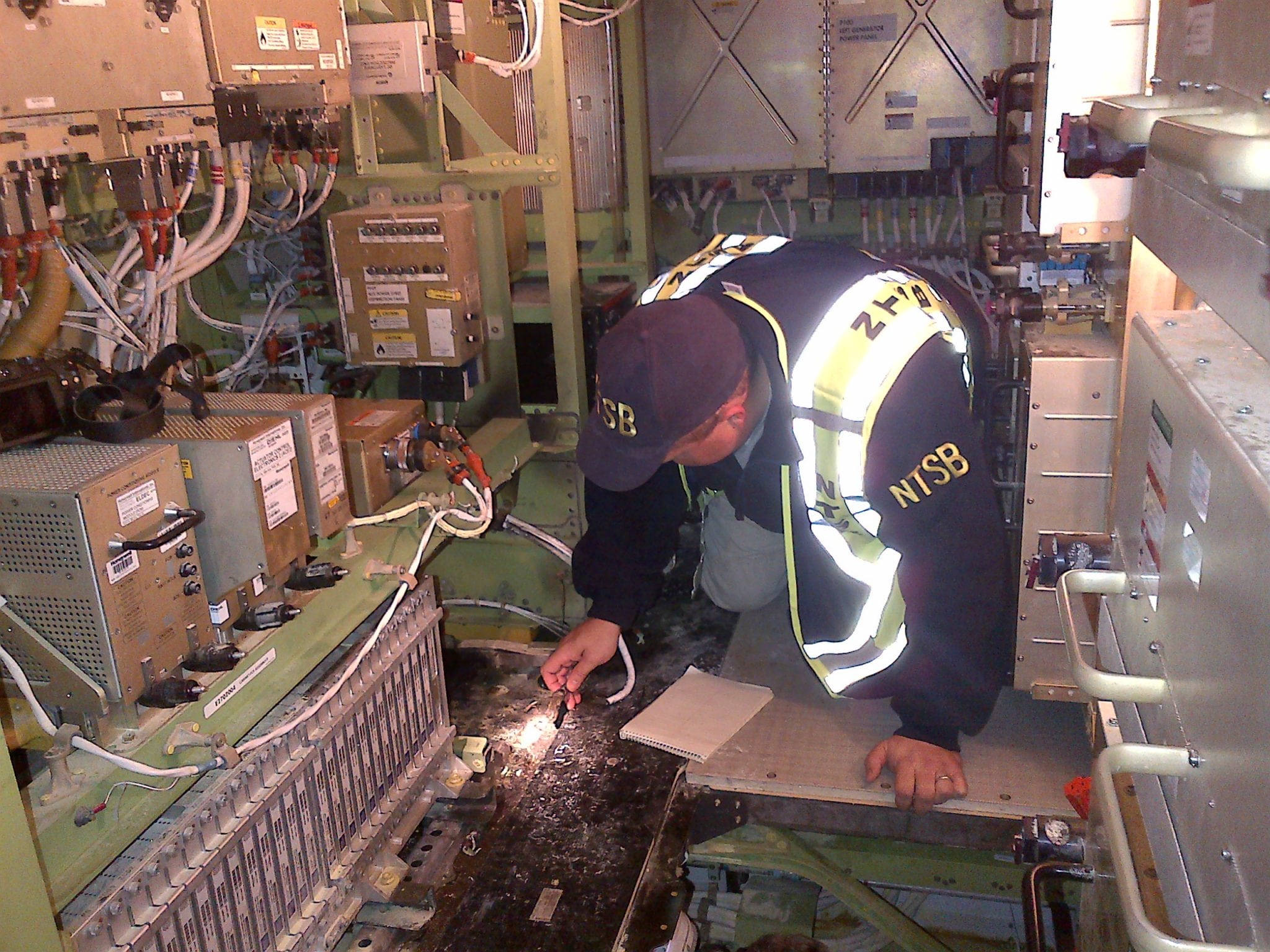[Avionics Today May 23, 2014] Federal safety officials are recommending new procedures to increase the safety of using lithium-ion batteries to power aircraft systems, based on key findings derived from the ongoing investigation of a fire incident that occurred on a Boeing 787 last year.

NTSB Investigator Mike Bauer inside the Boeing 787 under investigation at Boston’s Logan Airport. Photo, courtesy of NTSB.
The recommendations are based on the National Safety Transportation Board’s (NTSB) investigation of the functioning of lithium-ion batteries featured on the Boeing 787 Dreamliner. Two batteries on 787s flown by Japan Airlines (JAL) and All Nippon Airways (ANA) experienced separate hazardous incidents last year.
On January 7, 2013, an airline mechanic observed heavy smoke and a small flame coming from the Auxiliary Power Unit (APU) of a parked JAL Boeing 787-8 at Boston Logan International Airport. Nine days later, ANA made an emergency landing with a 787 shortly after takeoff due to a problem with the aircraft’s main battery. As a result, the global fleet of 787s was grounded until the FAA approved a redesign of the 787 lithium-ion battery system in April 2013.
Over the past year, as the NTSB continues to investigate the JAL 787 incident, the board’s preliminary findings concluded that one of the eight APU lithium-ion battery cells had experienced an uncontrollable increase in temperature and pressure (known as a thermal runaway) as a result of an internal short circuit. According to NTSB, the “single-cell failure propagated to adjacent cells, resulting in the cascading thermal runaway of several cells and the release of additional smoke and flammable electrolyte from the battery case.”
NTSB is recommending that the FAA develop an aircraft-level thermal runaway test to demonstrate safety performance in the presence of an internal short circuit failure; re-evaluate internal short circuit risk for lithium-ion batteries currently in-service and start to include a “panel of independent expert consultants early in the certification process for new technologies installed on aircraft.”
The last of the above mentioned recommendations is one of the strongest, as the board believes that the FAA was too reliant upon Boeing’s aircraft manufacturing expertise when originally developing the certification for including lithium ion batteries on the 787. Boeing first approached the FAA in 2004 about its intent to install lithium-ion technology for the main and APU batteries on the 787. At the time, lithium ion batteries in service in other applications such as cell phones and personal computers, were showing susceptibility to internal short circuiting with negative results such as overheating or an explosion, NTSB said.
Now, safety officials believe that the investigation has shown that as aircraft manufacturers continue to implement new technologies onboard aircraft, aviation authorities should consult with experts in those technologies to develop certification standards.
“Expertise outside the aviation industry during a certification program involving new technology could further strengthen the aircraft certification process by ensuring that both the FAA and the manufacturer are kept up to date about the most current research and information related to the technology which could be rapidly expanding in other industries during the course of an aircraft certification program (which can typically last 5 or more years),” said Christopher Hart, acting NTSB chairman, in a letter to the FAA.
The NTSB’s final report on the Boeing 787 lithium ion battery investigation is expected to be released in the fall.